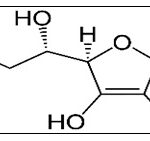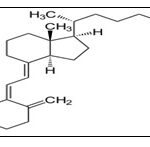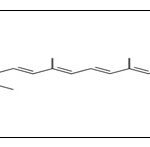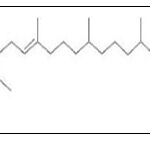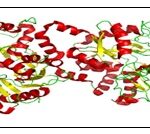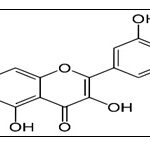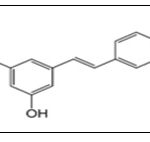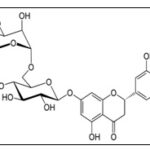A REVIEW ON NUTRACEUTICALS: IMMUNITY BOOSTER IN CORONA PANDEMIC
HTML Full TextA REVIEW ON NUTRACEUTICALS: IMMUNITY BOOSTER IN CORONA PANDEMIC
Sejal Patel * and Dhwani Shah
Department of Pharmacognosy, Nootan Pharmacy College, Sankalchand Patel University, Visnagar, Mehsana , Gujarat, India.
ABSTRACT: Coronavirus illness 2019 (COVID 19) has wreaked havoc worldwide and resulted in a high number of deaths. One of the key reasons for the coronavirus illness (COVID 19) having such a large impact on society is its unanticipated spread, while it has prevented adequate preparation. While it will take decades to develop a vaccine, immediate interventions are required to prevent COVID 19 related mortality. We have discovered that the immune system is crucial in reducing the severity of COVID 19 and that by modulating it, it’s possible to save people’s lives. Nowadays, post-Covid diseases Mucormycosis also spreads in humans, which is very dangerous to humans financially and mentally. Because any authority has approved no specific treatments or vaccines, there is a need for an alternative to improve population immunity. Antioxidants derived from natural resources can be used as a nutraceutical to boost immunity. The nutraceuticals are non-toxic and can be used by people of all ages. There is a chance that if they include nutraceuticals in their diet regularly, they will be better equipped to deal with the third wave of this illness.
Keywords: Corona, Nutraceutical, Immunity, Anti-oxidants
INTRODUCTION: The COVID-19 pandemic was declared by the (WHO) World Health Organization its Public Health appearance of international concern on January 2020 1. Coronaviruses can infect both humans and animals, and they have the ability to cross species barriers, ultimately increasing the spread of disease into epidemics or pandemics. The upper respiratory tract is infected by COVID 19. When it penetrates the alveoli, it can cause pneumonia and damage the epithelial cells; coronaviruses can enter the bloodstream and cause damage to a variety of organs, including the kidneys, liver, heart and eyes 2. Patients in critical condition frequently experience a “cytokine storm, which is a heightened systemic inflammation parameter involving C-reactive protein, cytokines such as interleukin (IL)-6, tumour necrosis factor (TNF) and IL-8, among other initial infections spread through pulmonary, replicate and spread through reactive oxygen spices (ROS). So, ROS plays a key role in the aetiology of disease. Hypoxia in simple language decreased oxygen level beyond the therapeutic treatment masking, social distancing, and sanitizing hands are prevented from this coronavirus. If some talk about improving their immunity, they have to take nutritious food.
Nutraceuticals are substances found in foods that have health-promoting properties. Nutraceuticals can be extracted, added to food, or utilized as food supplements. It is rare to find nutraceuticals in natural food in sufficient quantities to obtain these benefits 3. Furthermore, the term nutraceutical is used in paediatrics to describe how a proper diet loaded with biologically active substances allows us to get significant health benefits beyond the regular nutritional effects as a result always prefer functional foods that are high in vitamins, minerals, fiber, and fatty acids, all of which help to prevent disease 4.
Probiotics: Probiotics are live bacteria that have a favourable physiological effect on the host when given in adequate proportions. Prebiotics are indigestible micronutrients, most commonly oligosaccharides, that selectively the growth and activity of a limited number of bacterial species in the intestinal bacterial, which contributes to the reduction of intestinal pH and thus prevents pathogenic bacteria from colonizing. Biosynthesis of vitamin K, improved undigested fibers, increased immunity. A positive influence on gut flora are all benefits of probiotics, inhibiting the onset of allergic disorders, regulating intestinal pH, avoiding or treating ischemic heart syndromes, lowering blood cholesterol levels, generating vitamins B, and increasing the bioavailability of dietary calcium are also a benefit of probiotic. Other potential health benefits include the treatment of acute diarrheal disorders, cancer prevention, and tooth decay prevention. The most common types of probiotics belong to the genera Bifidobacterium, Lactobacillus, and Saccha-romyces and the most commons even types of probiotics include B. animalis subsp. Animalis, B. animalis subsp. Lactis, B. longum, L. acidophilus, L. reuteri, L. casei and S. boulardii 5-7.
Prebiotic: Initially, prebiotic explain as “non-digestible food items that have a positive effect on the host by encouraging the proliferation and/or activity of one or a few bacteria already present in the colon. Prebiotics has had several definitions, but the most recent one was defined as “substrates that are selectively used by host bacteria giving a health advantage 8 mechanisms is similar as probiotic. Prebiotics include fructans and oligosaccharides, arabino oligosaccharides, isomalto-oligosaccharides, xylo-oligosaccharides, resistant starch, lacto-sucrose, lacto-bionic acid, galactomannan, psyllium, polyphenols, and polyunsaturated fatty acids. The capability of prebiotics to impact the makeup and activity of human microbiota is linked to their health benefits in the GI tract, such a pathogen suppression and immune system stimulation 9. Prebiotics indirectly help in COVID 19 infection. By exerting anti-inflammatory and antioxidant effects, nutraceuticals, which include isolated nutrients, dietary supplements, diets, and herbal items, may assist in preventing the inflammatory cascade and hypercoagulation. Some of the nutraceuticals that improved immunity during this period are described here.
Vitamin C: Vitamin C Fig. 1, commonly known as ascorbic acid, is a water-soluble vitamin that helps to strengthen the immune system. Vitamin C protects biomolecules by acting as an antioxidant due to exposure to oxidants produced by regular metabolism and pollution and toxins. Besides that, vitamin C acts as a cofactor of several enzymes like in the production of epinephrine, norepinephrine, vasopressin, methylation of DNA (Deoxyribonucleic acid) and histones 10. The amount of vitamin C in the body varies depending on the environment and other factors like diabetes and aging. Because of chronic and acute disorder prevalence among the elderly, they are more susceptible to vitamin C insufficiency 11.
When older patients with acute respiratory infections were given 200 mg of vitamin C per day instead of a placebo, their illness severity indices were lower. In a recent pilot study with 21 patients of COVID 19, it was discovered that the patients had low serum levels of vitamin D and Vitamin C, furthermore, low amount of vitamin C levels and older age which showed to be a co-dependent risk factor for lethality which suggesting that serum vitamin C levels had a role in the importance of age as a predictor of lethality. Analysis of 44 studies by using doses of vitamin C starting at 200 mg /day found a reduction in the common cold in children as well as adults, which has been linked to vitamin C in helping improve the immune system and reduction of the severity of symptoms, as well as its antihistaminic properties 12. Vitamin C treatment was found to reduce the score for respiratory symptoms of pneumonia in critically sick patients with acute respiratory infection with a high dose of vitamin C has been associated with a range of favourable outcomes in ADRS patients, including reduced inflammation and organ damage, decreased pathogen infection and virulence and improved immune defence. In 98% of cases, COVID 19 patients have abnormal chest CT scan results indicate bilateral involvement of the lungs with ground-glass opacity, which resulting from increased fluid in the lungs, in light of the current COVID 19 pandemic vitamin C may help to minimise the negative effects of sepsis and acute pulmonary dysfunction, as well as the occurrence of pneumococcal disease 13.
FIG. 1: VITAMIN C
Vitamin D: Vitamin D is a steroid hormone which produced either endogenously by the skin’s response to UV radiation or exogenously by food or dietary supplements. Many research has revealed in the last decade that vitamin D deficiency causes a variety of disorders, including systemic infection. Vitamin Dis is an immunomodulator, therefore a vitamin D shortage lowers immunological function. 14 clinical investigation shows that low vitamin D levels in the blood cause acute respiratory infections, such as epidemic influenza. According to some recent studies, vitamin D deficiency reduces respiratory, immune function and increases the severity and mortality of COVID 19. Vitamin D reduces the risk of microbial infection through a variety of mechanisms and also prevents cold and cough through three mechanisms: physical barrier, adaptive immunity, and cellular natural immunity 15. Vitamin D has also been shown to reduce the incidence of COVID 19 infection in a recent investigation. These include sustaining cell connections and gap junction, improving cellular immunity by reducing the cytokine storm with an effect on interferon and tumour necrosis factor, and decreasing the cytokine storm with an influence on interferon and tumour necrosis factor and inhibiting T helper cell type 1 responses and promoting T cell induction are two ways to regulate adaptive immunity. In HIV infection, vitamin D administration was also reported to increase CD4+ T cell count. Some cohort studies have been shown that combining vitamin C, magnesium, and vitamin B12 therapy is useful in preventing COVID 19 clinical deterioration. Antioxidant gene expression (glutathione reductase modifier subunit) was also found to be increased by vitamin D supplementation.
FIG. 2: VITAMIN D
Vitamin A: Vitamin A (Retinol) is a fat-soluble and essential vitamin because the body cannot produce it. Vitamin A is found in green vegetables and yellow fruits and organ meat, milk, and cheese. Carotenoids, a provitamin of vitamin A are also found in green vegetables and yellow fruits. Retinol, retinal, and retinoic acid are some of the other components of Vitamin A 17. All trans-retinoic acid modulates many gene expressions by binding certain nuclear transcription factors, which is how vitamin A works. This gene is involved in vision, cell proliferation, tissue differentiation, haematopoiesis and immunity, among other functions. In terms of immunity, vitamin A aids in the preservation of gastrointestinal epithelial tissue in children who are sick or mal nourished. In the early differentiation stage of NK (Natural killer) cells, vitamin A performs a regulatory role, causing IFN (interferons)-to be down-regulated and IL (Interleukin)-5 to be increased 18. Vitamin A also modulates the formation of dendritic cell progenitors, and ultimately, it increases the liberation of pro-inflammatory cytokines IL-23 and IL-12. Vitamin A deficiency affects B cell function. Animal studies have shown that vitamin A deficiency causes a reduction in antibody response; aside from that, retinoids play a key function in cell-mediated immunity by activating T cells. Vitamin A supplementation increases the potential effect of T cells, particularly CD4 cells, in the juvenile population. Vitamin A at the RDA (recommended daily allowance) level improved mobility and reduced mortality in children at risk of vitamin A insufficiency, which was most likely caused by a viral infection like measles. Several studies show that youngsters who receive vitamin A on a daily basis have no lower respiratory tract infection. During the COVID19 pandemic, vitamin A boosts children’s immunity. Mild increases in cholestatic hepatitis, non-cirrhotic portal hypertension, serum liver enzymes and progressive cirrhosis, and fibrosis are all symptoms of hypervitaminosis A19-21.
FIG. 3: VITAMIN A
Vitamin K: Vitamin K belongs to the fat-soluble vitamin family. Vitamin K takes part in many biological and physiological processes. Vitamin K is one of the most active participants in the coagulation process, acting as a cofactor for a variety of proteins, including factor VII, IX, and X, prothrombin, protein S, and protein C. Vitamin K is linked to immunological responses to cellular injury, as it allows TAM (tyro3, Axl and Mer) receptors (a subfamily of tyrosine kinase receptors) to connect with its Gla-protein-ligand and growth arrest-specific (GAS-6) 22-23.
FIG. 4: VITAMIN K
Based on these findings, some studies have hypothesized an intriguing link between COVID 19 and vitamin K clinical outcome and its related complications, such as thrombosis and coagulopathy 24. Involved the vitamin K in the activation of matrix Gla-protein, which prevents the soft tissue calcification 25. This study also implies a link between vitamin K insufficiency and worsening clinical course in COVID19 patients due to increased fiber mineralization, and ultimately, it has been discovered that vitamin K deficiency is closely linked to ICU admission 26.
ZINC: Zinc is an essential mineral, except iron, found in higher concentrations in the body than any other trace element. Zinc is needed for a range of functions, including the normal functioning of several enzymes and cellular processes. It keeps the cytoskeleton control and stables the lymphocyte apoptosis in-vivo and in-vitro. The zinc significance is in increasing immunity is widely recognized. It has been shown that zinc can resist virus infection. Zinc appears to promote mucociliary clearance by increasing ciliary beat frequency. This element aids in the prevention of the replication of an influenza and rhinoviruses. It may be useful in suppressing the replication of SARS-CoV 2. (Severe acute respiratory syndrome coronavirus 2). The significance of zinc in the relationship with COVID-19 was investigated for its synergistic activity with chloroquine and hydroxychloroquine, two medications with antiviral capabilities 27-28.
Lactoferrin: Lactoferrin (LF) is an iron-binding glycoprotein having a molecular weight 70-80 kDa, and it can transport iron in the blood and serum. Lactoferrin can be found in avian and mammalian milk, but it is particularly plentiful in colostrum, the first milk produced after a baby is born. Lactoferrin can remove unbound iron from the body fluid while protecting against oxidative stress. In the case of viral infections, lactoferrin appears to prevent viruses from attacking human cell receptors 29-30. The potential spectrum of activity of lactoferrin has been observed in the COVID 19.
FIG. 5: LACTOFERRIN
Quercetin: Quercetin is a plant flavonoid that can be found in various grains, seeds, vegetables, and leaves.
All the quercetin is conjugated with residual sugars to generate quercetin glycosides. According to various researches, quercetin has antiviral, antioxidant, anti-inflammatory, and immuno-modulator properties 31-32. Due to its potential antiviral actions in inhibiting polymerases, proteases, reverse transcriptase, polymerases enzymes that bind viral capsid protein and decrease DNAgyrase, quercetin has been examined in numerous types and models of viral infection. Quercetin has been researched for its antiviral activities against a range of coronaviruses, and “quercetin holds considerable promise as a possible medication in the clinical treatment of SARS” according to Ling Yi and colleagues 33. Once a glycoprotein is synthesized, 3C like protease plays an important role in lytic release, which promotes replication. However, quercetin 3C-B galactose binds to 3C protease and inhibits proteolytic activity. This inhibitory effect is due to the hydroxyl group present in the quercetin3C-B galactoside. The hypothesis shows that quercetin has an anti-inflammatory and powerful scavenger drug worked will in COVID 19 instances, with dosages of 500 and 1000 mg for prophylaxis and treatment, respectively 34.
FIG. 6: QUERCETIN
Resveratrol: Polyphenolic resveratrol compound was found in various plants like grapes, blueberries, peanuts, etc. them consumed by humans. It responds in stressful conditions and in fungal infection 35. Resveratrol is weakly soluble in water in an acidic environment and is only stable at body temperature. The activity of resveratrol is reduced when the pH is raised 36. In-vitro studies on animal and human cells, resveratrol has antiviral activity against a variety of viruses like polyomavirus, HIV, Herpes simplex, and influenza A; several recent indicate that resveratrol quenches SARS-Cov in-vitro study and its molecular docking studies also revealed that resveratrol interacts strongly with the SARS-Cov-2 spike protein and make the human ACE2 receptor complex 37. Furthermore, resveratrol activates SIRT1 (sirtulin) deacetylase and increases Nrf2 (Nuclear factor erythroid 2-related factor 2) by reducing the expression of its negative regulator, KEAP1, which is critical for cell adaptability to oxidative stress and inflammation. When the Nrf2 pathway is activated, it migrates to the nucleus, where it stimulates the transcription of antioxidant response element target genes, protects cells from oxidative stress, and aid in inflammation suppression. Finally, while resveratrol consumption may have a significant impact on the severity of SARS-CoV-2 infection or susceptibility, and its limited oral bioavailability controls its absorption, and hence, it will affect therapeutic effects 38-39.
FIG. 7: RESVERATROL
Hesperidin: Hesperidin is a flavone glycoside commonly present in citrus fruits like lemons and sweet oranges. Hesperidin has several beneficial effects on anti-inflammatory, anti-diabetic, anti-hyperlipidaemic, cardioprotective, etc. The anti-inflammatory activity of hesperidin because of its protective effect from anti-oxidant and it suppresses the cytokine production as it’s had pro-inflammatory effect 40 Hesperidin had antiviral action against the influenza virus, reducing virus proliferation significantly. Hesperidin treatment improved cell-autonomous immunity by activating and upregulating p38 and JNK expression, both of which are important for cell defence mechanisms against the influenza virus. The SARS-CoV-2-RBD ACE-2 complex is formed when COVID-19viruse interacts to the ACE-2 receptor by its unique Spike receptor-binding domain (RBD) sequence. Several studies showed that hesperidin only compound that could create the interference between ACE-2 human receptor and SARS-CoV-2-RBD spike; thus, hesperidin block the entry of the virus into the lung. Hesperidin seems to be a possible COVID 19 infection prevention agent as a result of these findings.
Antiviral responses against COVID 19 infection are needed to activate both the cellular self-defense mechanisms and the immune system. Immunity is an essential component of the host’s resistance against viral infection. The involvement of hesperidin in stimulating the mitogen-activated protein kinase (MAPK) pathway is responsible for its antiviral properties against influenza. The MAPK host defence cascade aids in limiting viral replication and dissemination while minimizing tissue damage.
The interferon-MAPK pathway was found to have a key role in the COVID-19 immunological response. In a recent study. As a result, hesperidin's stimulation of host immunity may aid in the prevention of COVID-19 viral multiplication and progression, thus improving the patient's outcome 41-43. Some other natural and nutraceutical compound expresses anti-inflammatory and immunomodulatory effect. Some of these chemicals work by reducing inflammation and reducing reactive oxygen species (ROS). In the past, downregulation of MAPK pathway, reduction of inflammation effect, and inhibition of NF (necrotic factor)-B were some of the strategies used to battle SARS-CoV infection, with a focus on decreases in pro-inflammatory cytokines, particularly IL-6 So, other than above-described nutraceuticals listed in Table 1.
FIG. 8: HESPERIDIN
TABLE 1: LIST OF NUTRACEUTICALS EXHIBITING IMMUNOMODULATORY AND ANTI-INFLAMMATORY EFFECT IN COVID 19
| S.no. | Nutraceutical | Common sources | Action | Reference |
| 1 | Curcumin | Turmeric | Inhibits NF-kB pathway Inhibits p38 MAPK pathway. Downregulates STAT3 of the JAK/STAT pathway | 44 |
| 2 | Epicatechin | Apple, coca, grapes tea levaes | Downregulates STAT3 of the JAK/STAT pathway | 45 |
| 3 | Keampferol | Tomato, onion, potato, green leaves. | JAK/STAT pathway inhibition NF-κB pathway reduction. I MAPK pathway blokage | 46 |
| 4. | Emodin | Rhuharb | NF-κB pathway inhibition. block MAPK pathway reduces the production of interleukin 6 | 47 |
| 5 | Urosilic acid | Apples, basil, oregano, thyme, prunes | decrease STAT3 of the JAK/STAT pathway block the NF-κB pathway inhibit the excess production of IL-6 | 48 |
| 6 | Vitamin E | Nuts (like almonds and peanuts), seeds (sunflower seeds), vegetable oil, and green leafy vegetables | The NF-κB pathway is inhibited decrease the production of IL-6 | 49 |
| 7 | Cyanocobalamin | Whole grain cereals, eggs, soybeans, fish and meat products | NF-κB pathway inhibition. Inhibits activation of NLRP3 inflammasome | 50 |
| 8 | Genistein | Soybeans | Inhibits the NF-kB transcription factor, resist IL-6 synthesis | 51 |
| 9 | Zingerone and 12- dehydrogingerdione | Ginger | Inhibits NF-κB pathway, inhibit the synthesis of IL-6 | 52 |
| 10 | Alliin | Garlic | inhibition of MAPK pathway reduces the production of IL-6 | 53 |
| 11 | Apigenin | Grapefruit, onion, oranges, chamomile, parsley | Inhibits NF-κB pathway and STAT3, Reduces the expression of pro-inflammatory cytokines (IL-6) | 54 |
| 12 | Luteolin | Broccoli, carrot, thyme, chamomile | NF-κB pathway inhibition, resist MAPK pathway | 55 |
| 13 | L-carnitine | Dairy products (whey portion), meat and fish | block NF-κB pathway. Reduces the expression of CRP and pro-inflammatory cytokines (IL-6) | 56 |
| 14 | Taxifolin | Milk thistle, onion | Downregulates STAT3 of the JAK/STAT pathway. NF-κB pathway inhibition | 57 |
Plant Protease Inhibitors as Sarscov-2 Antiviral Molecules: Viruses use proteases to access the host. Synthetic protease inhibitors have long been used to treat many viral infections, including HIV, HCV, picornaviruses, SARS rotavirus, and others 58. TMPRSS2 and furin are serine proteases found in the host cell that help SARS-Cov-2 enter. Furin is a subtilisin-like serine protease, whereas TMPRSS2 (Transmembrane protease serine 2) is a trypsin-like serine protease 45. Furthermore, Mpro, a chymotrypsin-like cysteine protease, and PLpro (papain-like protease) play critical roles in viral replication. Protease inhibitors are released by respiratory epithelial cells to help maintain the balance essential for optimal lung function 59. The balance of proteases and protease inhibitors influences the pathogenesis of respiratory viruses 60. According to animal studies by Deng et al., coronavirus can quickly develop resistance to 3CL (3C-like protease) pro inhibitors. Still, this resistance comes at the cost of the virus’s fitness by preventing it from replicating quickly enough and limiting infectivity. TMPRSS2 is a type 2 transmembrane serine protease released by the host that has been demonstrated to be susceptible to antiprotease during infection. Therefore protease inhibitor is considered as a potential therapeutic agent 61.
CONCLUSION: Coronavirus 2019 has caused a worldwide pandemic, with thousands of people dying as a result. The vast majority were elderly people, particularly those with weakened immune systems and chronic illnesses. There is no vaccine and treatment yet that does not cause corona. Several clinical trials are undergoing, and there will possibly be a solution shortly.
There are always threats of new and newer viruses, which will attack human populations in such circumstances; it is prudent to preserve optimal health by taking appropriate adjuvants to avoid becoming unwell. There are varieties of ingredients that can be included in one’s daily diet to help build immunity or provide protection against the coronavirus. Polyphenols, leguminous seed containing plant protease inhibitors, and whey protein or jackfruits seed protein could all be part of a healthy diet. Turmeric, thyme, rosemary, and garlic are anti-inflammatory spices used in everyday cooking.
And the current study concluded that the potential benefits of Nutraceuticals in treating COVID-19 diseases.
ACKNOWLEDGEMENT: Nil
CONFLICT OF INTEREST: Nil
REFERENCES:
- World Health Organization. Coronavirus-19. Available online: https://www.who.int/emergencies/diseases/novel-coronavirus. 2019 (accessed on 25 October 2020).
- Ackermann M, Verleden SE and Kuehnel M: Pulmonary Vascular Endothelialitis, Thrombosis, and Angiogenesis in Covid-19. N Engl J Med 2020; 383: 120-28.
- Junaid K, Ejaz H and Abdalla AE: A Effective immune functions of micronutrients against SARS-CoV-2. Nutrients 2020; 12: 2992.
- Corkins MR, Daniels SR and de Ferranti SD: Nutrition in Children and Adolescents. Med Clin N Am 2016; 100: 1217–1235.
- Swanson KS, Gibson GR and Hutkins R: The International Scientific Association for Probiotics and Prebiotics (ISAPP) consensus statement on the definition and scope of synbiotics. Nat Rev Gastroenterol Hepatol 2020; 17: 687–701.
- Bustamante M: Probiotics and prebiotics potential for the care of skin, female urogenital tract and respiratory tract. Folia Microbiol Praha 2020; 65: 245–264.
- Bron PA, Van Baarlen P and Kleerebezem M: Emerging molecular insights into the interaction between probiotics and the host intestinal mucosa. Nat Rev Microbio 2012; 10: 66–78.
- Davani-Davari D: Prebiotics: definition, types, sources, mechanisms, and clinical applications. Foods 2019; 8: 92.
- Davani-Davari D: Probiotics: definition, types, sources, mechanisms, and clinical applications. Foods 2019; 8: 92.
- Carr AC, Shaw GM, Fowler AA and Natarajan R: Ascorbate-dependent vasopressor synthesis: a rationale for vitamin C administration in severe sepsis and septic shock. Crit Care 2015; 19: 418.
- Burr ML, Elwood PC, Hole DJ, Hurley RJ and Hughes RE: Plasma and leukocyte ascorbic acid levels in the elderly. Am J Clin Nutr 1974; 27: 144–51.
- Schorah CJ: The level of vitamin C reserves required in man: towards a solution to the controversy. Proc Nutr Soc 1981; 40: 147–54.
- Hanck A: Vitamin C in the elderly. Int J Vitam Nutr Res Suppl 1983; 24: 257–69.
- Dankers W, Colin EM and van hamburg JP: Vitamin D in autoimmunity: molecular mechanisms and therapeutic potential. Front Immunol 2017; 7: 697.
- Infante M, Ricordi C and Sanchez J: Influence of vitamin d on islet autoimmunity and beta-cell function in type 1 diabete. Nutrients 2019; 11: 2185.
- Bouillon R, Marcocci C and Carmeliet G: Skeletal and extraskeletal actions of vitamin D: current evidence and outstanding questions. Endocrine Rev 2019; 40: 1109-51.
- Blomhoff HK, Smeland EB and Erikstein B: Vitamin A is a key regulator for cell growth, cytokine production and differentiation in normal B cells. J Biol Chem 1992; 267: 23988–23992.
- AwasthiS, Peto R, Read S and Clark S: DEVTA (Deworming and Enhanced Vitamin A) Team. Vitamin A supplementation every 6 months with retinol in 1 million pre-school children in north India: DEVTA, a cluster-randomised trial. Lancet 2013; 381: 1469–1477.
- Fawzi WW, Mbise R and Spiegelman D: Vitamin A supplements and diarrheal and respiratory tract infections among children in Dares Salaam, Tanzania. J Pediatrics 2000; 137: 660–667.
- Imdad A, Yakoob MY and Sudfeld C: Impact of vitamin A supplementation on infant and childhood mortality. BMC Public Health 2011; 11 (3): 20.
- Mathew JL: Vitamin A supplementation for prophylaxis or therapy in childhood pneumonia: A systematic review of randomized controlled trials. Indian Pediatrics 2010; 47: 255–261.
- Ohashi K, Nagata K and Toshima J: Stimulation of sky receptor tyrosine kinase by the product of growth arrest-specific gene6. J Biol Chem 1995; 270: 22681–22684.
- Stitt TN, Conn G and Gore M: The anticoagulation factor protein S and its relative, Gas6, are ligands for the Tyro 3/Axl family of receptor tyrosine kinases. Cell 1995; 80:661–670
- Berenjian A and Sarabadani Z: how menaquinone-7 deficiency influences mortality and morbidity among COVID-19 patients. Biocatal Agric Biotechnol 2020; 29: 101792.
- Janssen R, Visser MPJ and Dofferhoff ASM: metabolism as the potential missing link between lung damage and thromboembolism in Coronavirus disease 2019. Br J Nutr 2020; 1–8.
- Dahlberg S, Schurgers L, Schott U and Kander T: Vitamin K deficiency in critical ill patients: a prospective observational study. J Crit Care 2019; 49: 105–109.
- Skrajnowska D and Bobrowska-Korczak B: Role of Zinc in Immune System and Anti-Cancer Defense Mechanisms. Nutrients 2019; 11: 2273.
- Wessels I, Maywald M and Rink L: Zinc as a Gatekeeper of Immune Function. Nutrients. 2017; 9: 1286.
- Wakabayashi H, Oda H, Yamauchi K and Abe F: Lactoferrin for prevention of common viral infections. J Infect Chemother 2014; 20: 666–671.
- Campione E, Cosio T and Rosa L: Lactoferrin as Protective Natural Barrier of Respiratory and Intestinal Mucosa against Coronavirus Infection and Inflammation. Int J Mol Sci 2020; 21: 4903.
- Li Y, Yao J, Han C, Yang J, Chaudhry MT and Wang S: Quercetin, inflammation and immunity. Nutr 2016; 8: 167.
- Robaszkiewicz A, Balcerczyk A and Bartosz G: Antioxidative and prooxidative effects of quercetin on A549 cells. Cell Biol Int 2007; 31: 1245–50.
- Uchide N and Toyoda H: Antioxidant therapy as a potential approach to severe influenza-associated complications. Molecules 2011; 16: 2032–52.
- Nair MP, Kandaswami C, Mahajan S, Chadha KC, Chawda R and Nairand Schwartz SAH: The flavonoid, quercetin, differentially regulates Th-1 (IFNgamma) and Th-2 (IL4) cytokine gene expression by normal peripheral blood mononuclear cells. Biochim Biophys Acta. 2002; 1593: 29–36.
- Pannu N and Bhatnagar A: Resveratrol: From enhanced biosynthesis and bioavailability to multitargeting chronic diseases. Biomedicine & Pharmacotherapy 2019; 109: 2237-2251.
- Zupančič S, Lavrič Z and Kristl J: Stability and solubility of trans-resveratrol are strongly influenced by pH and temperature. European Journal of Pharmaceutics and Biopharmaceutics 2015; 93: 196-204.
- Docherty JJ, Sweet TJ, Bailey E, Faith SA and Booth T: Resveratrol inhibition of varicella-zoster virus replication in vitro. Antiviral Res 2006; 72: 171–177.
- Palamara AT, Nencioni L, Aquilano K, Inhibition of influenza a virus replication by resveratrol. J Infect Dis 2005; 191: 1719–1729.
- Yang M, Wei J and Huang T: Resveratrol inhibits the replication of severe acute respiratory syndrome coronavirus 2 (SARS-CoV-2) in cultured Vero cells. Phytother. Res 2020.
- Molina N, Morandi AC, Bolin AP and Otton R: Comparative effect of fucoxanthin and vitamin C on oxidative and functional parameters of human lymphocytes. Int. Immunopharmacol 2014; 22: 41–50.
- Watson RR, Preedy VR, Zibadi S, Zanwar AA, Badole SL, Shende PS, Hegde MV and Bodhankar SL: Cardiovascular effects of hesperidin: a flavanone glycoside. In Editors Polyphenols in Human Health and Disease. San Diego 2014.
- Watson RR, Preedy VR, Zibadi S, Jadeja RN and Devkar RV: Polyphenols and flavonoids in controlling non-alcoholic steatohepatitis. In Editors Polyphenols in Human Health and Disease San Diego 2014.
- Dong W, Wei X, Zhang F, Hao J, Huang F and Zhang C: A dual character of flavonoids in influenza A virus replication and spread through modulating cell autonomous immunity by MAPK signaling pathways. Sci Rep 2014; 4: 7237.
- Wu C, Liu Y, Yang Y, Zhang P, Zhong W and Wang Y: Analysis of therapeutic targets for SARS-CoV-2 and discovery of potential drugs by computational methods. Acta Pharm. Sin B 2020.
- Huang L, Shi Y, Gong B and Jiang L: Blood single cell immune profiling reveals the interferon-MAPK pathway mediated adaptive immune response for COVID-19. Med Rxiv 2020; 20033472.
- Al Mijan M and Lim BO: Diets, functional foods, and nutraceuticals as alternative therapies for inflammatory bowel disease: present status and future trends. World J Gastroenterol 2018; 24 (25): 2673–2685.
- Yang DJ, Liu SC, Chen YC, Hsu SH, Chang YP and Lin JT: Three pathways assess anti-inflammatory response of epicatechin with lipopolysaccharide-mediated macrophage RAW264.7 Cells. J Food Biochem 2015; 39(3): 334–343.
- Hämäläinen M, Nieminen R, Vuorela P, Heinonen M and Moilanen E: Anti-inflammatory effects of flavonoids: genistein, kaempferol, quercetin and daidzein inhibit STAT-1 and NF-κB activations, whereas flavone, isorhamnetin, naringenin and pelargonidin inhibit only NF-κB activation along with their inhibitory effect on iNOS expression and NO production in activated macrophages. Mediators Inflamm 2007; 2007: 1–10.
- Hsu SC and Chung JG: Anticancer potential of emodin. Biomed 2012; 2(3): 108–116.
- Kashyap D, Tuli HS and Sharma AK: Ursolic acid (UA): A metabolite with promising therapeutic potential. Life Sci 2016; 146: 201-213.
- Huang MT, Ghai G and Ho CT: Inflammatory Process and Molecular Targets for Anti- inflammatory Nutraceuticals. Compr Rev Food Sci Food Saf 2004; 3(1): 127–39.
- Yanaka N, Koyama TA, Komatsu SI, Nakamura E, Kanda M and Kato N: Vitamin B6 suppresses NF-kappaB activation in LPSstimulated mouse macrophages. Int J Mol Med 2005; 16(6): 1071–1075.
- Dos Tramontin N, Luciano TF, de OMarques S, de Souza CT and Muller AP: Ginger and avocado as nutraceuticals for obesity and its comorbidities. Phytother Res 2020; 34(6): 1282–1290.
- Sánchez-sánchez MA, Zepeda-morales ASM and Carrera-quintanar L: Alliin, an Allium sativum nutraceutical, reduces metaflammation markers in DIO mice. Nutrients 2020; 12(3). doi:10. 3390/nu12030624.
- Nicholas C, Batra S and Vargo MA: Apigenin blocks lipopolysaccharide-induced lethality in-vivo and pro-inflammatory cytokines expression by inactivating NF-κB through the suppression of p65 phosphorylation. J Immunol 2007; 179(10): 7121–7127.
- Haghighatdoost F, Jabbari M and Hariri M: The effect of L-carnitine on inflammatory mediators: a systematic review and meta-analysis of randomized clinical trials. Eur J Clin Pharmacol 2019. doi:10.1024/0300-9831/a000619.
- Sunil C and Xu B: An insight into the health-promoting effects of taxifolin (dihydroquercetin). Phytochemistry 2019; 166: 112066.
- Meyer M and Jaspers I: Respiratory protease/antiprotease balance determines susceptibility to viral infection and can be modified by nutritional antioxidants. Fischer 2015; 308: 1189–1201.
- Fear G, Komarnytsky S and Raskin I: Protease inhibitors and their peptidomimetic derivatives as potential drugs. Pharmacol Ther 2007; 113(2): 354–368.
- Van de Ven WJM, Voorberg J and Fontijn R: Furin is a subtilisin-like proprotein processing enzyme in higher eukaryotes. Molecular Biology Reports 1990; 14(4): 265–275.
How to cite this article:
Patel S and Shah D: A review on nutraceuticals immunity booster in Corona pandemic. Int J Pharmacognosy 2021; 8(12): 487-95. doi link: http://dx.doi.org/10.13040/IJPSR.0975-8232.IJP.8(12).487-95.
This Journal licensed under a Creative Commons Attribution-Non-commercial-Share Alike 3.0 Unported License.
Article Information
02
487-495
504 KB
982
English
IJP
Sejal Patel * and Dhwani Shah
Department of Pharmacognosy, Nootan Pharmacy College, Sankalchand Patel University, Visnagar, Mehsana , Gujarat, India.
sejupatel04@gmail.com
27 September 2021
14 December 2021
15 December 2021
10.13040/IJPSR.0975-8232.IJP.8(12).487-95
31 December 2021




